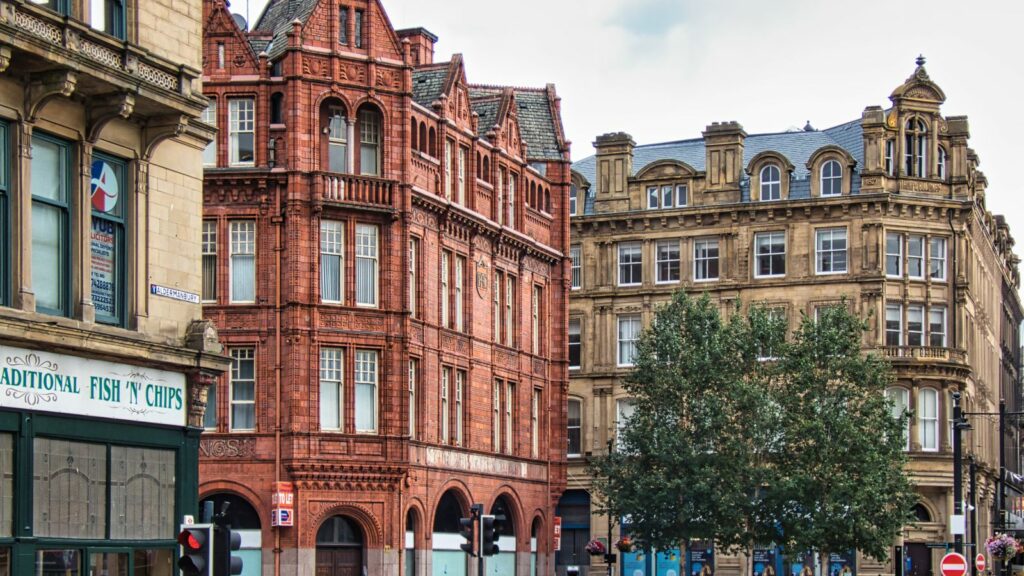The difference between a restoration that honors your building’s heritage and one that compromises its integrity often comes down to one critical decision: your choice of contractor.
When it comes to historic commercial properties, working with general contractor services that specialize in preservation isn’t just preferable—it’s essential. A contractor without historic preservation expertise can inadvertently cause irreversible damage, even with the best intentions.
Qualification Verification: Beyond Basic Credentials
Before entrusting your historic property to a contractor, verify these essential qualifications:
- Specific experience with commercial buildings from your property’s era
- Portfolio of completed projects on buildings with similar architectural features
- References from owners of comparable historic properties
- Specialized training in historic preservation techniques
- Membership in preservation-focused professional organizations
- Knowledge of traditional building methods relevant to your structure
- Familiarity with local landmark regulations and requirements
Ask potential contractors to provide detailed case studies of similar historic commercial projects they’ve completed. The case studies should outline challenges encountered, solutions implemented, and lessons learned. This information provides insight into how they might approach your project.
Specialized Expertise Assessment: Beyond General Construction
Historic restoration requires specialized knowledge that goes beyond standard construction practices. Ensure your contractor demonstrates expertise in:
- Traditional masonry techniques specific to your building’s period
- Historic window restoration rather than default replacement
- Ornamental metalwork repair and replication
- Decorative plasterwork conservation and restoration
- Terra cotta and stone repair methods
- Appropriate cleaning techniques for historic facades
- Historic roofing systems and materials
Request documentation of your contractor’s approach to specific preservation challenges relevant to your building. For example, if your property features decorative sheet metal cornices, ask for examples of how they’ve handled cornice restoration on other projects.

Team Composition: The Preservation Specialists
The team assigned to your project significantly impacts the quality of restoration. Verify that key team members have:
- Formal training in historic preservation or restoration
- Significant experience on similar historic commercial projects
- Knowledge of traditional building techniques and materials
- Familiarity with architectural styles relevant to your building
- Understanding of appropriate conservation practices
- Access to specialists for unique architectural elements
- Connections with traditional craftspeople when needed
Ask to meet the actual team members who will be working on your property, not just the company principals who secure the contract. Request their individual portfolios and specific roles in previous historic restoration projects.
Subcontractor Network: The Specialists Behind the Scenes
Even the best restoration contractors rely on specialized subcontractors for certain aspects of historic work. Evaluate their subcontractor relationships by asking:
- Which specialized trades will be subcontracted versus handled in-house?
- How long have they worked with these subcontractors?
- What historic-specific qualifications do these subcontractors possess?
- Can they provide examples of the subcontractors’ previous work?
- How is quality control maintained with subcontracted work?
- Do they have backup specialists if their primary subcontractors are unavailable?
- How is communication managed between multiple specialty trades?
Request profiles of key subcontractors who will be involved in your project, particularly for specialties like ornamental metalwork, decorative plastering, or historic window restoration. These specialized trades often determine the quality of the final restoration.
Project Approach: Methodology Matters
How a contractor plans to approach your project reveals much about their preservation philosophy. Assess their methodology by evaluating:
- Their process for documenting existing conditions before work begins
- How they identify and preserve character-defining features
- Their approach to material conservation versus replacement
- Methods for testing treatments before widespread application
- Strategies for balancing historical accuracy with practical requirements
- Plans for reversibility in their interventions where possible
- Approach to unexpected discoveries during the project
Request a detailed project plan that outlines their specific methodology for your building. This should include preservation goals, intervention hierarchy, and decision-making processes for addressing unexpected conditions.
Documentation Practices: Preserving the Process

Proper documentation is essential for both current work and future maintenance. Ensure your contractor’s documentation practices include:
- Detailed before, during, and after photography
- Material analysis and testing results
- Written condition assessments
- Treatment methodologies and materials used
- As-built drawings recording actual conditions
- Locations of hidden elements discovered during work
- Recommendations for future maintenance
Ask to see examples of project documentation from previous historic restoration work. Comprehensive documentation not only provides valuable information for future repairs but also demonstrates the contractor’s thoroughness and commitment to preservation standards.
Communication Systems: Transparency and Collaboration
Restoration projects require more intensive communication than standard construction. Evaluate potential contractors’ communication systems:
- Regular meeting schedules and reporting protocols
- Methods for documenting and approving changes
- Systems for tracking decisions and their rationale
- Processes for presenting options when unexpected conditions arise
- Strategies for keeping stakeholders informed throughout the project
- Digital platforms used for project documentation and communication
- Availability of key personnel for consultation during the project
Request examples of their communication tools, such as project reports, meeting minutes, or digital dashboards from previous historic projects. These demonstrate their ability to maintain clear communication throughout complex preservation work.
Problem-Solving Track Record: When the Unexpected Occurs
Every historic building harbors surprises. Assess how contractors handle unexpected challenges by asking:
- Examples of unexpected conditions they’ve encountered on similar projects
- How they developed solutions while maintaining preservation standards
- Their process for making time-sensitive decisions about unforeseen issues
- What resources they consult when facing unprecedented problems
- How they balance budget constraints with preservation needs
- Examples of creative solutions they’ve developed for unique challenges
- Their approach to documenting and learning from unexpected discoveries
Request case studies that specifically highlight unexpected challenges and how they were resolved. These reveal not just technical capability but problem-solving creativity essential for historic restoration.
Resource Network: Beyond In-House Expertise
Even the most experienced contractors sometimes need specialized consultants. Evaluate their professional network by asking about:
- Relationships with preservation architects and engineers
- Access to materials conservation specialists
- Connections with architectural historians
- Collaboration with traditional materials suppliers
- Contacts with specialty fabricators for custom elements
- Relationships with local preservation organizations
- Access to academic or research institutions for unusual challenges
Ask for examples of projects where they brought in outside expertise to address specific preservation challenges. This demonstrates both their commitment to quality and their humility in recognizing when specialized knowledge is needed.
Quality Control Systems: Maintaining Standards
Quality control is particularly critical in historic restoration. Evaluate contractors’ quality management by assessing:
- Their inspection protocols for each phase of work
- Standards and references they use to judge quality
- Mockup and sample requirements for approval
- Testing procedures for materials and methods
- Documentation of quality control processes
- Training requirements for their workforce
- Procedures for correcting work that doesn’t meet standards
Request their formal quality control plan and examples of quality issues they’ve identified and addressed on previous historic projects. This demonstrates their commitment to maintaining high standards throughout the restoration process.
Contract Structure: Aligning Incentives
The structure of your contract significantly impacts project outcomes. Consider these contracting approaches:
- Time and materials with a guaranteed maximum price for unpredictable work
- Unit pricing for repetitive elements like masonry repair
- Allowances for anticipated but undefined restoration work
- Contingency reserves appropriate for historic projects (typically 15-20%)
- Milestone-based payment schedules tied to quality benchmarks
- Retention provisions that extend beyond project completion
- Clear change order processes specific to preservation work
Ask potential contractors which contract structure they recommend for your specific project and why. Their answer reveals their understanding of the unique challenges in historic restoration and their confidence in their own capabilities.
The contractor you select for your historic commercial property isn’t just providing a service—they’re becoming temporary stewards of your building’s heritage. By using this checklist to thoroughly evaluate potential contractors, you’ll find a partner who brings not just construction expertise but a genuine commitment to preserving your building’s unique historical character.
